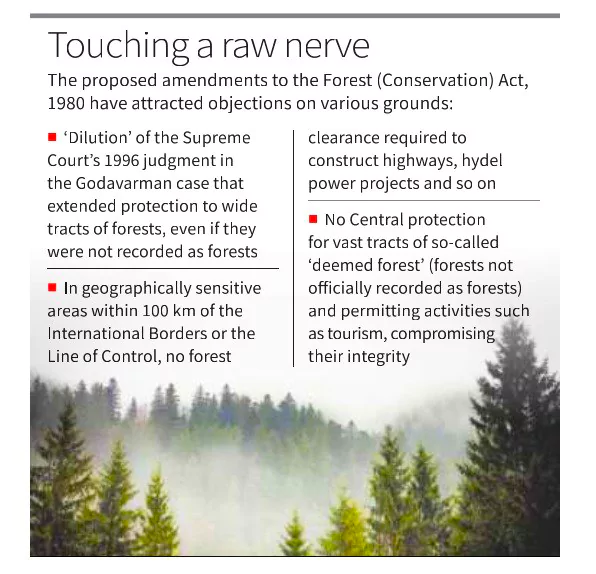![]() 21 Feb 2024
21 Feb 2024

This editorial is based on the news “Calm assessment: On the extent of ‘deemed forest” which was published in the Hindu. This article highlights the Supreme Court of India’s decision to put a pause on the Centre’s action to amend India’s Forest Conservation Act 1980, that was brought in to check the wanton razing of forests for ‘non-forestry uses’.
| Relevancy for Prelims: Supreme Court, Forest Conservation, Forest (Conservation) Amendment Bill 2023, Forest Rights Act 2006 And Rights Of Forest Dwellers and T.N. Godavarman Thirumulpad Judgment.
Relevancy for Mains: India’s Forest Conservation Act, 1980- Features, Need for Amendments and Way Forward. |
|---|

Such amendment has triggered a slew of public interest petitions as an assault on the Act’s ambition of forest protection. While a final judgement is pending, the Court’s order to the Centre to compile and make public, by April, States’ efforts at recording the extent of deemed forests is welcome. There is a need to maintain a balance between economical and ecological growth development.
| Must Read | |
| NCERT Notes For UPSC | UPSC Daily Current Affairs |
| UPSC Blogs | UPSC Daily Editorials |
| Daily Current Affairs Quiz | Daily Main Answer Writing |
| UPSC Mains Previous Year Papers | UPSC Test Series 2024 |
<div class="new-fform">
</div>
